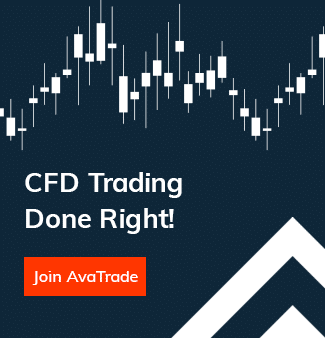S&P 500 (US500)
| MT5/MT4 Symbol:US_500 |
| Instrument:US_500 |
| Country:US |
| Currency:USD |
| Exchange:CME |
| Trading Hours (GMT):23:00-21:14 & 21:30-21:59 |
What is the Standard & Poor’s 500 Index?
The S&P 500, as it is abbreviated, is a reflection of the performance of the top 500 stocks of leading companies selected by economists in the USA, and listed on the NYSE (New York Stock Exchange) and NASDAQ (Nasdaq Exchange).
With over $7.8 trillion ‘owned’ to the index, its assets comprise approximately $2.2 trillion in total, which make up 80% coverage of the available market capitalisation.
The index components and weightings are determined by S&P Dow Jones Indices through its auditing committee. The S&P 500 still shows up in a differentiation and advantage over other indexes such as the Dow Jones Industrial Average (DJIA), the Russell 2000 index or the Nasdaq Composite (other popular indexes) due to its weighting methodology and its diverse number of constituencies.
Join Friedberg Direct now and enjoy competitive spreads, high leverage, and all the benefits of trading with a regulated, Canadian broker!
S&P 500 History
In 1975 Standard & Poor’s introduced the S&P 500 as a market index to track the value of the 500 largest companies listed on the New York Stock Exchange and the Nasdaq Exchange. Opening at 386.36 on the 1st of January, 1975, the index rose to nearly 700 within its first decade, which was the tail end of the economic boom that began with the close of WWII.
After 20 years of seeing such highs, in late 1981 the index started to decline and fell to a devastating 300. A major contributor to the replenishing of the index was the interest rate hikes by the Federal Reserve between 1982-2000, recovering it to 1,350%.
In 2000 the stock markets experienced a ‘bubble’ due to people entering middle class status. Technology had been improving, and there was a stable economic climate which lead to an increase in the quality of life around the globe. Most speculators say that this was due to developments in the technology sectors and the hype surrounding the thriving worldwide web and internet.
Eventually the bubble burst. As technology heavily impacted the Nasdaq by up to 90% the S&P 500 fell in 2002 again by 40%, bringing it to its lowest value since inception. The S&P 500 managed another recovery in 2007, reinforced by financial and commodity stocks, plus lower housing prices.
Unfortunately, with debt defaults created by falling housing prices, the financial system’s downward spiral impacted the S&P 500, which finally hit its all-time low in March of 2007 and experienced a drop of 57%. Recovery took the index 6 years and it has now climbed by 200%.
S&P 500 Index composition
All the components of the S&P 500 are weighted on a free float market capitalisation, where the larger companies influence and affect the total value of the index to a large degree.
As of March 2015, for example, the market capitalisation of the companies that comprise the SP500 was $18.5 trillion. The largest member was Apple Inc. which contributed $720 billion in contrast to the smallest member – Diamond Offshore Drilling (DOD), with a value of $3.65 billion.
Obviously, changes in the Apple stock price affected the overall index by almost 200 times more than that of DOD due to its portion of the index. Apple makes up 4% of the index and Diamond Offshore Drilling a mere 0.02%.
The companies of the index are chosen by a committee at Dow Jones S&P Index. The organisation is determined to ensure a positive reflection of the US economy and for this reason only selects the best. Based on the changes in the economy companies are dropped or added.
The S&P 500 charts are an easily accessible indication of how the stock markets and economy are performing, at a glance.
Top 10 companies represented by S&P 500 and their index weighting (%)
| Exxon Mobil Corp | 3.1172% |
| Apple Inc. | 2.4098% |
| Microsoft Corp | 2.0327% |
| Procter & Gamble | 1.8204% |
| General Electric Co | 1.7028% |
| Intl Business Machines Corp | 1.6814% |
| Johnson & Johnson | 1.6238% |
| JP Morgan Chase & Co | 1.6101% |
| AT&T Inc. | 1.5419% |
| Chevron Corp | 1.5091% |
Factors that influence the overall index price
There are many factors that influence the S&P 500’s index price, both locally (in the USA) as well as from a global economic standpoint. Various country-wide economical shifts, such as major events that happen almost monthly, will have an impact.
Brexit for example, and other political events have the ability to change market sentiment and this lends itself to changes in the index price. Such events should be monitored during index CFD trading online.
Another factor that will influence this index is the import and export industry directly connected to supply and demand both locally and globally. Most investors that trade on this index need to keep abreast of the internal and external changes that influence and affect even the smallest market move. This can easily be accessed by following the S&P trading charts and following trends of the components.
Ensure you follow the economical benchmark changes that have a direct influence on US stocks and indexes such as: employment and unemployment rates, Gross Domestic Product figures, Interest Rate hikes or decreases, import and export regulations, political changes, the dollar index, etc. Major announcements, updates and events can also be found on our economic calendar.
S&P 500 Trading information
- The S&P futures contract (called the E-Mini) is tradable from 22:01 – 20:14 (GMT), Monday to Friday
- The S&P moves in increments of 0.25
- Leveraged trading available, as well as short selling
- The minimum trade size is 1 unit
- The currency of the S&P500 is the US Dollar
Trade the S&P 500 with Friedberg Direct
Friedberg Direct covers the global markets, to keep you informed and undated with up to the minute, accurate daily analysis, and trading tools.
- Enjoy the security of trading with a Canadian-regulated broker
- S&P 500 index trading along with other popular indices like HSI, DAX and CAC
- Go long or short – trade your view on the market
- MetaTrader 4 & MetaTrader 5 platforms for desktop, tablet & mobile
- Trade with competitive spreads
- Rely on 24/5 technical support
Join Friedberg Direct now and enjoy competitive spreads, high leverage and all the benefits of trading with a regulated, Canadian broker!







